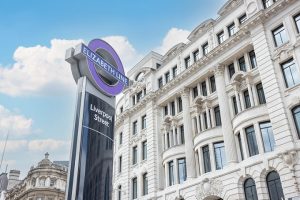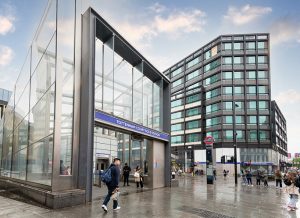A model for 21st-century growth is the Elizabeth line
- Advice Clinic
- 31.10.22
- Benham & Reeves
 The much-touted Elizabeth line (also known as Crossrail) places an already world-class transportation system firmly at the heart of a growth blueprint that extends into the twenty-first century and beyond.
The much-touted Elizabeth line (also known as Crossrail) places an already world-class transportation system firmly at the heart of a growth blueprint that extends into the twenty-first century and beyond.
The Crossrail project much exceeds anything that has come before it on the London Tube network in terms of impact and scope. It serves as the cornerstone of a significant effort to spur economic growth in the Southeast of England and spans a 100 km path from Reading and Heathrow in the west to Shenfield and Abbey Wood in the east. An additional 1.5 million people are immediately within 75 minutes of Central London thanks to the Elizabeth line’s greater speed and efficiency in the area.
Business travellers can board a jet to Singapore or Dubai in less than 30 minutes after leaving a conference in Canary Wharf
thanks to the advantages of international travel. The Elizabeth Line, which offers a frequent quick service (every five minutes) from Canary Wharf to Heathrow Airport’s Terminal Five, aims to make this exciting new reality accessible to everyone.
The Elizabeth line’s impact on the outer London housing market
Previously overlooked London areas are now finding that their proximity to a new, ultra-convenient transportation offering has put them squarely in the sights of those looking for the next big London property boom area. Southall and Hayes, two suburbs that were never on anyone’s radar for prosperity, are now considered serious contenders. These are the same neighbourhoods that have the same journey times into Central London as Chiswick or Finchley. As travel times are reduced, the Elizabeth Line has become the ultimate game changer, bringing more and more suburbs under its influence and orbit.
Property values in London have long been associated with the success and future prosperity of any infrastructural change in the Capital, and a look at some of the trends gives us a good idea of the impact of Crossrail, particularly along its route.
The Elizabeth line’s impact on the London housing market
 There is clear evidence of a “Crossrail Bounce,” which is a series of mini-booms in the streets surrounding the various stations along the route. From the announcement of the rail initiative to its completion, property prices in these areas have risen, some more dramatically than others. However, the creation of new commuter belts is not the only thing stimulating the London economy; over 300,000 new jobs and 90,599 new homes have also been created. A highly skilled and aspirational workforce is looking for good schools, open green spaces, and amenities, and they’ll find them on London’s outskirts.
There is clear evidence of a “Crossrail Bounce,” which is a series of mini-booms in the streets surrounding the various stations along the route. From the announcement of the rail initiative to its completion, property prices in these areas have risen, some more dramatically than others. However, the creation of new commuter belts is not the only thing stimulating the London economy; over 300,000 new jobs and 90,599 new homes have also been created. A highly skilled and aspirational workforce is looking for good schools, open green spaces, and amenities, and they’ll find them on London’s outskirts.
The areas that have seen the most dramatic changes are those near the main underground networks. Crossrail has transformed them into major transportation hubs, and developers are quick to recognise their potential. A number of exciting new constructions have begun, which is very encouraging for astute investors and tenants looking for the best of both worlds.
Where to buy property on London’s Elizabeth line
As residents take advantage of their locations on the Elizabeth Line, neighbourhoods like Hayes and Southall on the western outskirts of the Capital are becoming more well-known. Housing stock that is still relatively affordable continues to draw investment, while Heathrow Airport’s close proximity will draw business travellers. Southall, which is next to the Grand Union Canal’s banks, is widely known for its thriving multi-cultural high street and diverse array of eateries.
Since it is closer to Central London, Ealing long served as a hub for media professionals and other creatives. If you want to invest here, you’ll need more money, but Hammersmith’s parks and top-rated schools continue to draw the best and the brightest. The West End begins in earnest at Paddington, and the neighbourhood around the Overground station has been upgraded in line with its crucial position on the Elizabeth Line network. It is another region of West London that is surrounded by old canals and towpaths.
| Area | Elizabeth Line station | New Development(s) | Journey time to Bond Street (mins) |
|---|---|---|---|
| Hayes | Hayes & Harlington | Hayes Village | Current time 80 Crossrail time 22 |
| Southall | Southall | The Green Quarter | Current time 75 Crossrail time 20 |
| Ealing | Ealing Broadway | Filmworks Dickens Yard | Current time 23 Crossrail time 12 |
| Paddington | Paddington | West End Gate | Current time 7 Crossrail time 2 |
Best-value undiscovered locations near Elizabeth line stations:
- Drayton West
It is a neighbourhood of Hayes in West London that combines accessibility to Heathrow with the presence of numerous exceptional elementary schools. - Slough
Slough’s growth curve is one of the steepest in the nation now that it is out of the shadow cast by Windsor Castle. There is a huge demand for new developments like Horlicks Quarter due to the drastically reduced journey time into London. - Reading
By no means a London suburb by any means, but yet again, Crossrail has done its magic. Reading is one of the UK’s regions with the strongest growth rates despite being just as close to Stonehenge as it is to the Capital. This is due to the fact that the Elizabeth Line’s journey into the West End only takes a startling 25 minutes—less time than a single episode of your favourite TV show!
Other primed areas to invest that came with Crossrail
East and Southeast London were prepared for the changes brought on by Crossrail thanks to a number of significant regeneration initiatives. The attraction has many open areas, stunning views of the Docklands skyline and the River Thames, and live history on every street.
The Elizabeth Line’s proximity is where growth is greatest:
| Area | Elizabeth Line station | New Development(s) | Journey time to Bond Street (mins) |
|---|---|---|---|
| Whitechapel | Whitechapel | Silk District | Current time 23 Crossrail time 10 |
| Woolwich | Woolwich | Royal Arsenal Riverside | Current time 41 Crossrail time 21 |
| Stratford | Stratford International | Stratford Plaza | Current time 22 Crossrail time 15 |
- Brentwood
Residents of Brentwood have access to what seems like infinite acres of woodland and open green areas since they live in a well-established commuter hub that lies at the intersection of the city and the countryside. Young families are strongly encouraged to relocate there by the existence of a prestigious independent school. - Maryland
Residents that live close to Stratford can benefit from living next to one of Europe’s largest shopping centres (Westfield Stratford Shopping City).Can the Elizabeth Line be considered a success after approximately £20 billion was spent? Every great city expansion begins with a thorough revamp of the transportation system. Canary Wharf pioneered it with the DLR network, and the 2012 Olympics did likewise with the addition of the Jubilee Line. The Metropolitan Line, which allowed the Capital’s rising population access to enormous tracts of countryside, allowed for the development of a significant portion of Northwest London. Any strategy that helps cut travel times to workplaces, theatres, and other locations is sure to catch the attention of today’s tenant. Smart investors are prepared to profit from the Elizabeth Line’s success after realising its impact.
Get in touch with our Sales team if you’re interested in purchasing a house close to the Elizabeth line; they’ll be pleased to help.
About the Author
With over 60 years of experience in London market, Benham and Reeves offers a comprehensive one-stop service which includes London property sales (purchase and selling) and full letting and management services to investors. Benham and Reeves Hong Kong SAR office was established in 1995 to provide real estate agency services to Hong Kong buyers, sellers and landlords in regards to all their London property needs.View all posts by Benham & Reeves